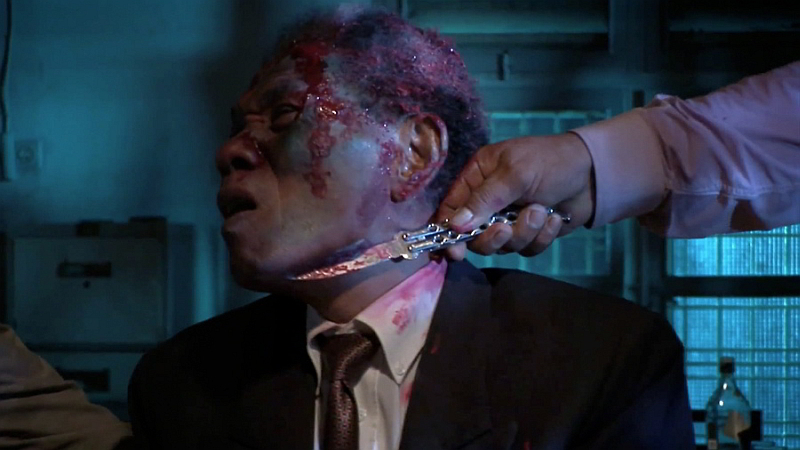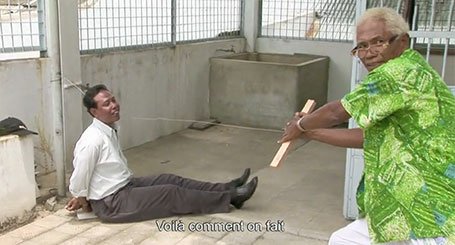The Act of Killing movie review

“The Act of Killing” is the kind of movie that shuts you up for at least fifteen minutes after the credits. It makes you so uncomfortable that you can just chatter about irrelevant stuff with your friends out of the cinema.
Then, on the tram the way home, you suddenly burst in wordiness.
What happened is that “The Act of Killing” has finally been screened in Italian cinemas.
I went to see it the other day with a group of friends at the “Cinema Aquila”, in Pigneto, Rome.
The Act of Killing is an unconventional documentary film directed by Joshua Oppenheimer.
The film deals with the systematic slaughter of real or supposed communists in the aftermath of a failed coup in 1965 that led to General Suharto assuming power.
The director was not interested in gave a full picture of the historical events though. He didn’t even mention Suharto once.
The documentary revolves instead around the character of Anwar Congo, a leader of paramilitary organisation Pancasila Youth, whose job was to kill prisoners.
Because the historical picture was only hinted, I wouldn’t say it is a movie specifically about Indonesia’s ’65.
I would rather say it’s a movie about “the act of killing” itself, the psychology of the killer and the banality of evil.
Half of the movie you almost sympathize with the playful Congo and his funny fat sidekick.
They were making jokes, they were wearing fancy clothes, they were dancing and laughing.
You see Congo playing with his nephews, while another Preman (a word for Indonesian gangsters responsible for the killings), was amiably shopping with his wife and daughter in a mall.
Throughout the movie you almost forgot those people were not talking of picnics in their youth, but of torturing and killing hundreds of innocent people.
You laugh because of the funny situations and scenes; at the same time you also feel that something is wrong.
In the documentary the director ask Congo and the other Premans to bring him to the place of the killings, and explain how they used to kill people. They were also asked to re-enact their killings for an hypothetic Hollywood style movies.
Why those retired killers would agree to do that? Because of course, they were great fans of Hollywood movies and, as they candidly declared, they were inspired by Al Pacino’s characters and “sadistic movies”.
They were actually mafia films that suggested Anwar Congo a more effective way to kill people, namely strangle them with a metal wire.
Congo and his mates were not Hollywood stars but, as they declared, they had something more to it. Their killings were no fiction. They were real.
This dichotomy between what’s real and what’s fake runs throughout the whole movie.
So again, the actual killings were partly inspired by fake killings in the movies.
Congo and the others were not comfortable with their past deeds, in fact they often had nightmares.
At the same time it didn’t seem that the killers felt what they were doing was real.
Furthermore, in the documentary the real killers re-enacted the killings for a fake Hollywood-style movie.
Toward the end there is an overturning: Congo was asked to play the role of a communist killed by metal-wire choking (this killing technique at this stage had become a powerful symbol of “the act of killing” itself).
During the scene Congo suddenly panicked and went blank for several minutes. After watching the recording of the scene, Congo confessed Oppenheimer to kind of know now how his victims felt.
“Not really” replied the director’s voiceover “because you know that was just a movie, but they know they were going to die”.
From that moment on Congo start realizing that what he did was real.
The last time he went where the killings took place, he couldn’t help vomiting, but no vomit comes out. As much he was willing to explain what happened to the director, he keep on bending and making horrible vomiting sounds. He finally left the place, like one who finally understood.







